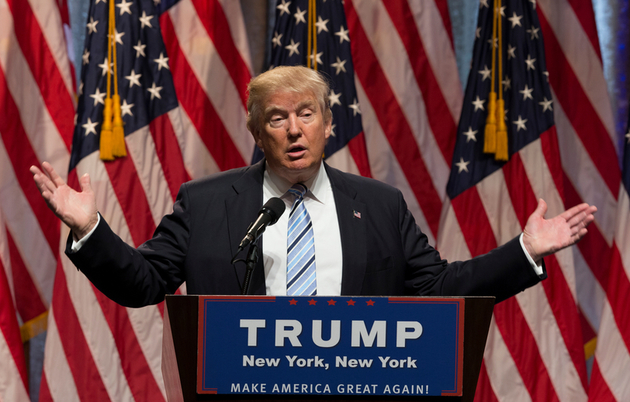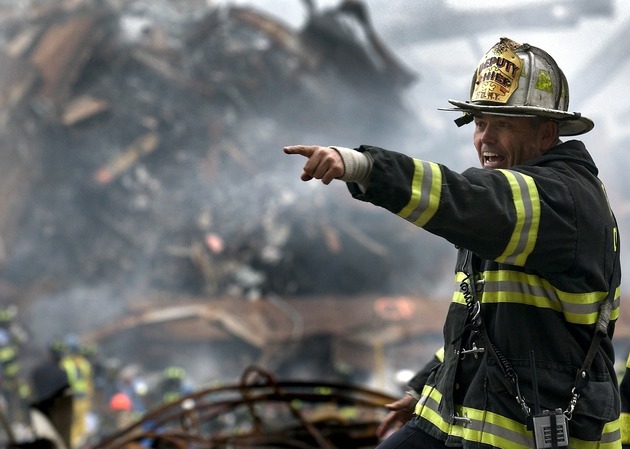
Donald Trump And The Art Of Asbestos
 According to the Republican presidential nominee, the anti-asbestos movement is a conspiracy rigged by the mob. Yes, the mob.
According to the Republican presidential nominee, the anti-asbestos movement is a conspiracy rigged by the mob. Yes, the mob.
For nearly five months, people around the country have been campaigning for or against Donald Trump. As one of the most polarizing presidential candidates of the century, we’ve watched debate after debate, commercial after commercial and repeatedly said, “Wow.”
There’s no doubt certain aspects of Trump’s beliefs are startling, overwhelming and offensive. But what the media shows is just one side.
Among all of Trump’s absurd ideologies, such as extreme vetting of immigrants and building a giant wall to keep them out, he also supports the use of asbestos. As a known carcinogen responsible for an estimated 10,000 American deaths a year, it’s surprising that a presidential candidate would uphold an industry that promoted its use.
But then again, is it?
The Art of Conspiracy
According to the Republican presidential nominee, the anti-asbestos movement is a conspiracy rigged by the mob. Yes, the mob.
In his 1997 book, The Art of the Comeback, Trump warns the world there may be more to this anti-asbestos ploy than meets the eye.
“I believe that the movement against asbestos was led by the mob, because it was often mob-related companies that would do the asbestos removal. Great pressure was put on politicians, and as usual, the politicians relented.”
As with many of Trump’s allegations, the voice of reason — in this case science — says otherwise.
Researchers in the 1930s established a connection between asbestos and lung cancer. It was also during this time that physicians began to understand mesothelioma, an aggressive asbestos-related cancer almost exclusively caused by asbestos exposure.
While the evidence against asbestos grew, so did the influence of the asbestos industry. This led to a decades-long asbestos cover-up. Its effects linger today.
The Art of Ignorance
Another example of Trump’s disregard for asbestos victims came with the construction of his iconic Trump Tower.
Several Polish construction workers who worked on the construction of Trump Tower sued the real estate mogul in 1983. The New York Times reported the men “often worked in choking clouds of asbestos dust without protective equipment.” Trump denied knowing about the working conditions, but 16 years later, he settled the case out of court.
Throughout his career, Trump has demonstrated a distinct lack of compassion for asbestos victims, calling an anti-asbestos law “stupid” in his 1997 book and irresponsibly claiming asbestos is “also 100 percent safe, once applied.”
Tell that to the hundreds of first responders exposed to asbestos on 9/11 as they rushed to the deadliest terrorist attack in U.S. history. Say it to the faces of hundreds of people now developing asbestos-related diseases such as mesothelioma.
The Art of Tragedy
On Sept. 11, 2001, the United States was rocked by tragedy.
When the Twin Towers collapsed, a massive cloud of dust and debris released asbestos fibers and other toxic substances into the air. Asbestos fireproofing rained upon Manhattan.
The World Trade Center Health Registry estimates that nearly 410,000 people were exposed to deadly asbestos throughout the rescue, recovery and cleanup efforts. Despite the estimated 400 tons of asbestos used in the World Trade Center’s insulation, drywall, fireproofing materials and steel, Trump claims asbestos could have saved the buildings.
In a 2012 tweet, Mr. Trump explains that if most of the asbestos had not been replaced in the World Trade Center, it would have saved the building from turning into a towering inferno.
.@dubephnx If we didn't remove incredibly powerful fire retardant asbestos & replace it with junk that doesn't (cont) http://t.co/d10u18dh
— Donald J. Trump (@realDonaldTrump) 17 октября 2012 г.
This isn’t the first time Donald Trump has credited the collapse of the Twin Towers on the lack of asbestos. According to Mother Jones, he made a similar argument in a 2005 meeting with a subcommittee of the Senate Homeland Security and Governmental Affairs Committee. Only this time he was making a testament to his ability to efficiently renovate the United Nations headquarters.
“A lot of people could say that if the World Trade Center had asbestos it would not have burned down, and it wouldn’t have melted, okay? A lot of people in my industry think asbestos is the greatest fireproofing material ever made.”
While these types of diseases typically take 20-50 years to develop, the extensive amount of exposure may shorten the latency period of the diseases. According to Asbestos.com, “Five years after inhaling the toxic debris from Ground Zero, an emergency responder from 9/11 died of mesothelioma. Another worker, 41-year-old Deborah Reeve, developed a serious cough just two years after the attacks and died of mesothelioma in 2004.”
On Aug. 24, 2015, Marcy Borders, the iconic “Dust Lady” from haunting images taken on 9/11, passed away from stomach cancer. According to a HuffPost article, “There is some limited evidence for asbestos [as the cause of the cancer].”
The stories go on and on. In fact, over two years ago, the New York Post published an article stating 2,500 Ground Zero workers have cancer. Health experts predict this number will rise.
The Art of Putting People First
Of course, Trump is not the first person to ignore the hundreds of thousands of asbestos victims residing in the United States.
In fact, the Fairness in Class Action Litigation Act and the Furthering Asbestos Claim Transparency (FACT) Act recently passed through the U.S. House of Representatives without a single Democrat supporting it. Why?
The FACT Act would create new barriers and delays for victims of asbestos exposure seeking financial assistance. It would risk victims’ privacy and security by publicly listing portions of their Social Security numbers, in addition to revealing personal financial information. Despite these concerns, the troubling act wasn’t rejected.
Once again, profits were placed before people. Corporations gained support while they negligently risked the lives of millions of their workers. Linda Reinstein, founder of the Asbestos Disease Awareness Organization, explained the understandable outcry after the passage of the legislation in a recent press release:
“The dangers of asbestos have been known since the early 1900s, but asbestos is still legal and lethal in the U.S., causing devastating illnesses and death for those exposed. Corporations that exposed Americans to a known carcinogen should be held accountable. It is reprehensible that the House has passed legislation that will let asbestos corporations off the hook, create significant privacy risks for victims, and delay compensation and justice.”
So when is the right time to begin supporting asbestos victims and their loved ones? When is the right time to put people before profits? And most importantly, when is the right time to ban asbestos?
Maybe Trump is right. Maybe the mob rigged the anti-asbestos movement. He would know. After all, a recent Politico article lays out Trump’s ties to the mob. Maybe he had insider knowledge. Only one person can answer that, and he chose not to comment on this article.
Note: I reached out for comment from multiple members of Donald Trump’s presidential campaign, and none responded. I am employed by The Mesothelioma Center.







